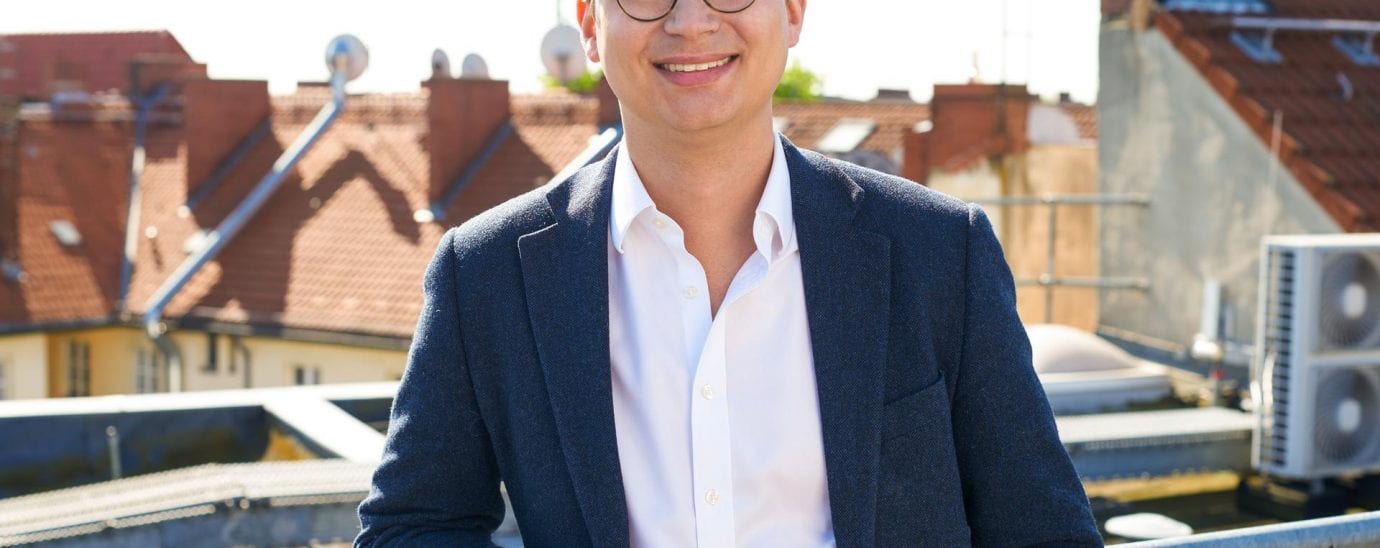Founder Feature: Andreas Schneider, Co-founder & MD, Vimcar

In our latest Founder Feature, we’ll be talking with the Co-founder and Managing Director of Vimcar, Andreas Schneider.
In 2012, an Audi research project sparked an idea for Andreas. He noticed an opportunity for a manufacturer-independent connected car solution. Read on to discover more about Vimcar and Andreas’ fascinating founder journey.

Who are you and what is your back story?
I am Andreas Schneider, managing director and co-founder of fleet management solutions provider, Vimcar. The motivation for founding the company came during a design research project which I was involved with for Audi in 2012, looking at digital business models for the connected car of the future. I found that while there were some great ideas out there which made sense from a consumer perspective, many were not commercially viable for a single car manufacturer to provide. So we set out to build an independent company offering digital services to fleets across multiple brands.
A key milestone in our journey came in 2013, when I met who turned out to be our first investor, in Berlin. We didn’t have a prototype. We didn’t even have a PowerPoint presentation. I simply explained that I wanted to build a company in the connected car space, and he liked it. He was the founder of Gate 5, which later became Nokia Maps – and was eventually bought out by Audi, BMW and Daimler – so he had been on a similar journey once already.
Could you tell us about your company and what you’re striving to achieve?
Vimcar has one clear goal – to redefine fleet management for European SMEs by digitalising the company car of the future. We have quickly established ourselves as Germany’s leading and most-trusted fleet management software provider, with approaching 100,000 connected vehicles in our home market.
Our SaaS telematics solutions cover all aspects of fleet management, including cost and document management, outlier analysis, CO2 reporting. real-time vehicle tracking, theft warning and route planning, with an emphasis on easy-use, affordability, and strong customer support. This makes our products perfect for fleets of 2-200 vehicles, particularly for smaller fleets with no dedicated full-time fleet manager.
Going forward our ambition is to continue to lead the German market, while moving into other European territories. We entered the UK market with our fleet tracking product earlier this year, which in 2021 we plan to launch in France, as well as expanding our offering in the UK with our fleet admin product.
What made you decide to take on the challenge of founding your business?
I grew up in a small town near the headquarters of Audi, where it seemed everyone worked for Audi or one of its suppliers. I was not at all interested in cars, so I always promised myself that I would work in any industry other than automotive. Then, at the end of my studies, I was selected to undertake the research project which inspired the launch of Vimcar. With Audi. Of all the companies which could have selected me why did I get Audi and get sent home again?! So my experience at Audi was the real catalyst, and I will be forever grateful for that opportunity. If things hadn’t come around in this way Vimcar might have never been established.

What is the core technology driving your start-up’s product/service?
From a technology perspective the key selling point of our products is that they are truly plug and play. When we entered the market it was clear that the other offerings out there were just too complicated. They needed to be installed professionally by a garage, or the software was available on desktop, but not mobile, for example. While this might work for an enterprise business, not so for a SME, few of which have a dedicated full-time fleet manager. We therefore made the clear decision to laser focus on supporting SMEs, with solutions which were easy to use, easy to install and affordable. From day one we thought like a SME, where in many cases fleet managers are drivers themselves. Our customers are invariably small teams, therefore it’s crucial that fleet managers and drivers support each other. As such our products help to make processes easy, enabling customers to optimise the workflows of both drivers and fleet managers, and to improve communication and create trust between them, ultimately saving time and effort for both.
Tell us about some of the biggest obstacles you’ve had to overcome?
The most significant was ahead of our launch in Germany in 2013, when we needed a hardware supplier. Simple, we thought. We secured a meeting in China with the CEO of a leading company in diagnostic equipment for garages – our thinking being that they would understand car data across multiple brands. We spent a week there and felt very positive about having a deal – but on our return home we heard nothing, for weeks. It turned out they saw us as too small, too specialist, not a clear business opportunity for them. But we were under pressure to launch in order to go to the next stage of investment, and we were extremely lucky to have a Plan B in a French supplier who we quickly brought on board, enabling us, just, to keep to our schedule. But it was close.
What’s most exciting about your traction to date?
We’ve enjoyed many successes and milestones along the way but for me building a company on the verge of having 100,000 connected vehicles in the SME space by the end of this year is hugely exciting. Generally, companies selling fleet services in traditional
markets have found it very difficult to sell to SMEs, because it is too expensive to do so. As such, nobody has focused on the mass market – 5,10, 20-strong fleets. So a software company achieving such success in this market and being able to support often overlooked small businesses is an achievement we can all be very proud of.
How are you measuring your success? What are your metrics?
We have two core commercial KPIs. Firstly, monthly recurring revenue – given that customers pay per month per vehicle. If this continues to grow, we stay on track.
Secondly, revenue retention – based on the amount of customers still with us after one year. I prefer this as a metric because it shows that the product is good, we’re delivering success for our customers, and the technology is running smoothly. It’s the real truth that we’re doing a good job and have not over-promised. Our revenue retention is currently running at around 120% – so increasing year-on-year as customers upscale or equip further vehicles – which we regard as good rate for a SME-focused software company in this space.
Read more: Founder Feature: James Dean, CEO and Co-Founder of SenSat
What are the future implications of the technology you are developing? Have you considered that it could have negative consequences for some people? How would you deal with that?
Looking at mega trends in mobility – for me sustainability, autonomous driving and car sharing – the biggest opportunity for us is to support SMEs in establishing and maintaining sustainable fleets, something which has been out of the reach of many until now. We believe that setting ambitious sustainability goals should be as achievable for smaller businesses as it is for large enterprises. This is the current focus of our investment in the product team to develop functionalities which help customers to analyse the carbon footprint of their fleet, to inform, for example, decisions on which vehicles should be replaced for electrified models, and when. Or where to install charging infrastructure – we can tell where vehicles are most
often parked, and therefore where it makes most sense to place chargers. We’re in a perfect position to do this – we are sitting on the data, we know which of their cars are most used, how and for how long – we have everything our customers need to make these decisions. With our products we have a true chance to be helpful – which we see as both our responsibility and business opportunity.
With regards any potential negative consequences of the technologies we are developing, inevitably there’s scope for this when we’re tracking people’s movements, and the implications for their privacy. From customer feedback and user research we know that most people don’t mind their data being recorded if they know why, and what it will be used for. As such we are completely transparent with customers on why we track certain data and why we need it to offer our service, and operate to the highest standards of data security.

What are your goals over the next 1, 3, 6 and 12 months?
When the pandemic hit, we were lucky not to have to change our business plan overnight because our sector was not significantly affected. We took some time to understand the implications for the market, and like any company adjusted our financial plan to be more cautious with expenditure. We have therefore taken this time to invest in our product, processes and customer service, so we’re ready for faster growth when things recover. Our plan remains on track to enter and develop new markets in Europe. This is the next stage for us.
Do you see this as UK centric or will you conquer the world by going global?
When we started to look at international expansion it was clear to that Europe was our next opportunity beyond our home market of Germany. We could have gone to the US or India, but rather than just looking at the market size we looked at where Vimcar is in pole position. We’re based in Berlin, one of the most vibrant tech cities in Europe. We can hire people from all over the world here. We’re at the heart of the continent with many other vibrant markets just one or two hours flight away. So, we have the best chance of succeeding by becoming a truly European company, although German-based. We have a lot to look forward to.
To find out more abour Vimcar, and Andreas Schneider, visit: www.vimcar.co.uk
